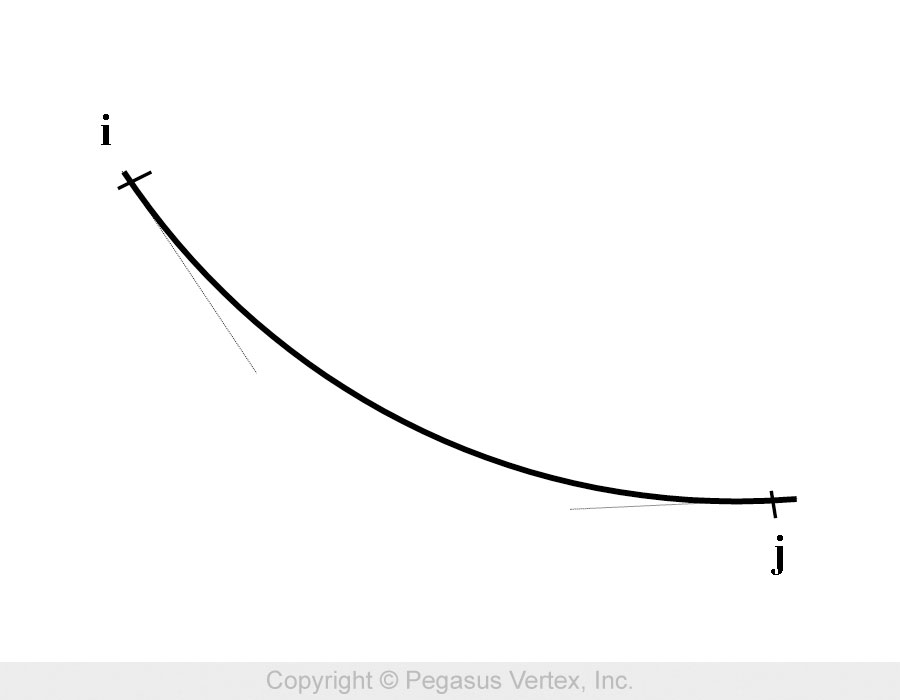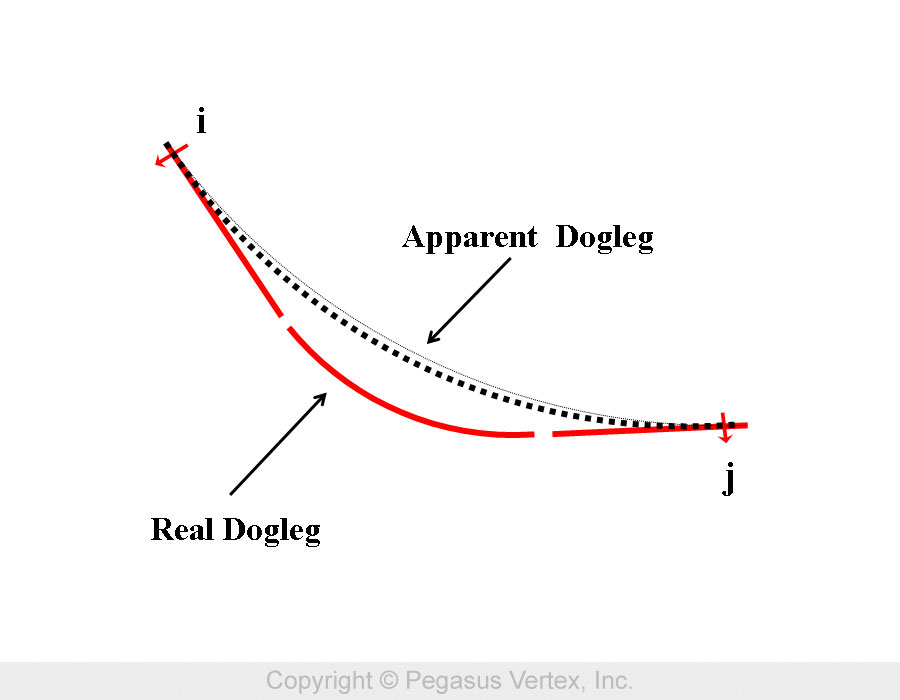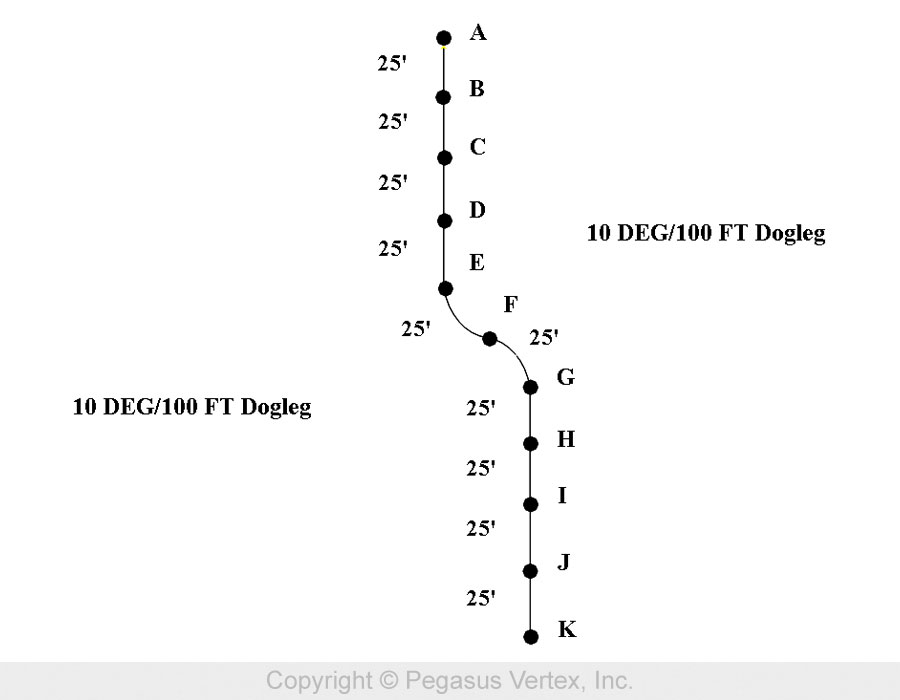When determining the casing wear to be expected over an interval of the intermediate casing, the lateral load per unit length of this intermediate casing is the key quantity to be determined. CWPRO uses the dogleg severity and the drillstring tension to make this determination.
If a wellbore changes direction over a given interval of its measured depth, this will result in a lateral load being applied by the tool joints to the casing over this interval. The lateral load per unit length over any given depth interval is proportional to the dogleg severity which applies over that interval.
Dogleg severity is determined from the results of the directional survey of the well. In a directional survey, the direction of the wellbore is determined at a series of measuring stations. Using the directions measured at the two ends of a survey interval and the distance between these end points, the wellbore is approximated by a circular arc spanning the distance between these two end points.
Thus, the apparent dogleg is uniformly distributed over the length of the survey interval, as shown in Figure 1.
However, if all of the change of direction occurs within a small sub interval, as shown in Figure 2, the dogleg severity may be much larger than the apparent dogleg computed as though the curvature was uniformly distributed over the directional survey station spacing.
Thus, the use of a station spacing which is considerably longer than the extent of the curved section of the borehole can result in the prediction of a longer interval of casing wear which is considerably smaller than that which actually exists within the sub interval.
So, use closer station spacing. Standard survey station spacing is 100 ft or 30 meters. For high resolution, 30 ft or 10 meters spacing can be used.
It is impractical to set station spacing less than 30 ft, since the statistical uncertainty of the directions measured at the survey stations approaches the magnitude of the angles needed to determine the dogleg severity of the station spacing interval.
In the event that a maximum dogleg severity is specified in the well contract, make sure you see the original survey measures, and not a 5 or 7 point running average of the dogleg severities. CWPRO requires original survey measures (inclination and azimuth) as input.
Artificially low values of the dogleg severity as a function of the measured depth in the intermediate casing can result in the prediction of dangerously low values of casing wear.
A numerical example of this problem is shown in Figures 3 and 4. Figure 3 pictures an `S’ shaped dogleg, and Figure 4 is a table showing the dogleg severities as determined by a series of measures based on 100 ft. survey station spacing , and the value of dogleg severity that actually exist within the survey intervals.




